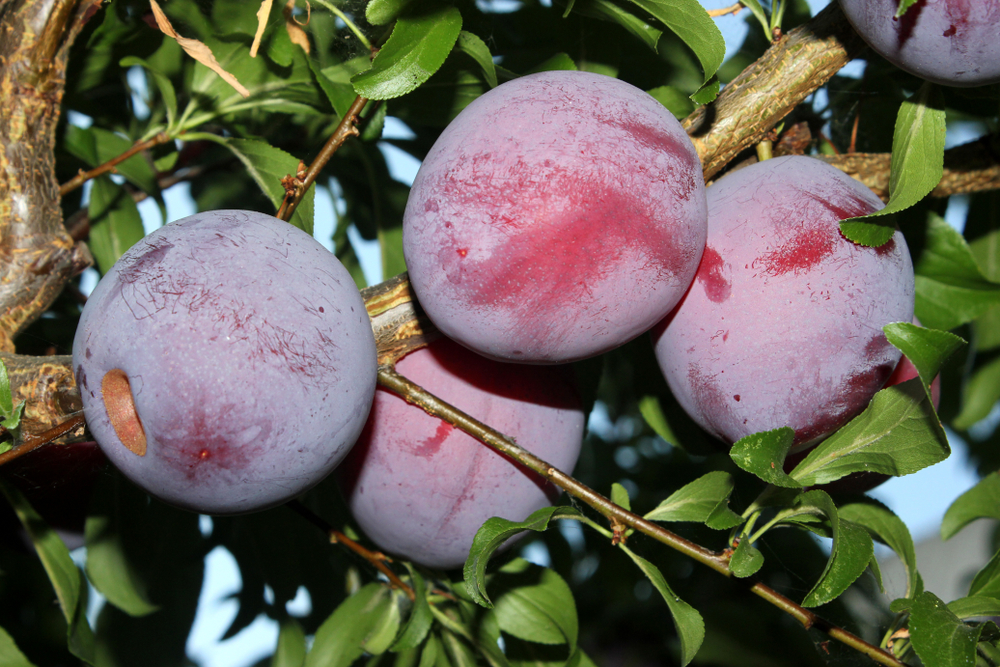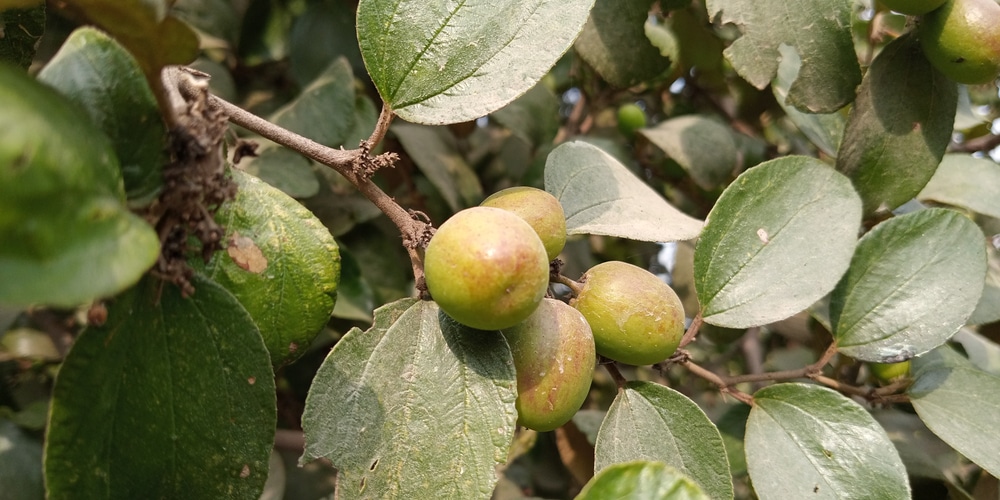Though you may have seen plums available year-round at your local grocery store, that doesn’t mean that every plum tree will produce fruit yearly.
In fact, whether or not a plum tree has fruit in a given year depends on various factors, including how it’s pollinated, the age of the tree, growing conditions, and whether or not it’s a biennial bearer.
So read on as we take a closer look at these factors to better understand why plum trees don’t always produce fruit.
Self-Pollination vs. Cross-Pollination

The most significant factor determining whether a plum tree will produce fruit in a given year is how it’s pollinated. Plum trees can be either self-pollinating or cross-pollinating, and each type has its own unique set of benefits and drawbacks.
Self-pollinating plum trees, as you might expect, can pollinate themselves. If you have a self-pollinating tree, you only need one, making these varieties great for small gardens or yards. The pollen from one flower will mingle with another blossom on the same tree and fertilize the ovules. Examples of self-pollinating plum trees include ‘Stanley’ and ‘Santa Rosa.’
On the other hand, cross-pollinating plum trees require another plum tree variety nearby to be pollinated. Though this may appear to be a drawback initially, it often results in higher yields and larger fruit. ‘Satsuma’ and ‘Shiro’ are both examples of cross-pollinating plum trees.
Age of the Tree
A more obvious indicator of whether or not a plum tree produces fruit is the age of the tree. Plum trees generally take three to six years to reach maturity and bear fruit. So, if you have a young plum tree, don’t expect it to produce any fruit at all in its first few years.
Temperature
In addition to the tree’s age, the temperature can also play a role in whether or not fruit is produced.
For example, plum trees require a certain number of chilling hours (when temperatures are below 45 degrees Fahrenheit) before they can resume normal growth in the spring.
As a result, plum trees may have little to no fruit if they don’t meet these chilling requirements.
Biennial Bearing
Finally, plum trees don’t always bear fruit yearly, even when they’re mature and meet their chilling requirement. This is because of something called biennial, or alternate, bearing, which refers to the tendency of some fruit trees (including plum trees) to produce a large crop one year, then a smaller crop (or no crop at all) the following year.
There are a few different theories as to why biennial bearing occurs. Still, the most likely explanation is that it’s nature’s way of ensuring that the tree doesn’t produce more fruit than it can adequately support. After all, a large fruit crop would be a lot for a small tree to bear, both literally and figuratively.
Conclusion
To sum up, whether or not a Plum tree produces fruit every year depends on several factors, including the type of tree, age, growing conditions, and whether it’s a biennial bearer. So, if you’re wondering why your plum tree didn’t produce any fruit this year, one (or more) of these factors could be responsible.
